Australia So Much to See


Imagine holding something 100 million years old – how young do you think you’d feel? Our introduction to the dinosaur and marine
reptile fossil belt of
We were surprised to see hardly any cattle on the plentiful grass plains which remained from the drought breaking January floods. On enquiring, we were told that because of the run of bad years, the banks would not lend the graziers any more money to re-stock
once they at last had a good season.
Boulia is alongside the
Boulia is the gateway to the west as the
Visit the Stonehouse Museum and the treasures in the Fossil Display behind the house. Stonehouse was built in 1888 as the home for storekeeper James Edward Jones and is now furnished in the period and open to walk through, together with outdoor machinery and a shed of collectables. We were privileged to be welcomed by Dinosaur Dick Suter # when we visited the Fossil Display shed at Stonehouse Museum. All the fossils in this display were found and excavated within the Boulia Shire, mainly by Richard and John Suter. Read a summary of the different marine creatures from this era here.
Where other museums often have replicas of skeletal finds, at Boulia, you are looking at the real thing, and if you are lucky, talking
to the highly entertaining local who uncovered many of the fossils; Dick Suter, otherwise known as Dinosaur Dick. Together with
his brother John, Dick uncovered many of the fossils on display, including an as yet unnamed species. Marine fossils date back
100 million years and some Nautiloids are dated at between 450 and 500 million year old. Nautiloids today are little different
to these early fossils.
Much of what is now western Queensland was once part of a huge sea known as the Eromanga Sea, which through several stages millions
of years apart, proved to be an ideal medium for preserving the ancient fossils we are now privileged to see being uncovered in our
lifetime. Fossil formation in these ancient inland seas was dependent on a chemical stream coating the bones. Others just
rotted away.
The last inland sea during the late Albian period, about 98 million years ago is depicted here taken from information at the fossil
display at the Stonehouse museum in Boulia. Boulia fossils are principally marine fossils, many of which pre-dated land based
dinosaurs. This area encompassed parts of
Boulia has something else special; the story of the Min Min Light. We went to the Min Min Centre for the highly recommended Min Min Encounter. A theatre consists of a series of rooms you visit progressively during the 45 minute experience where characters tell their stories of seeing the mysterious Min Min Light, which is displayed with high tech wizardry. This very clever and complex theatre which envelops the visitors into the story culminates with sitting in the last room in which the seating area rotates a full circle while visual displays of all types of lights onlookers have seen are screened before you. Min Min Encounter
Read the story behind the mystery, first hand accounts of sightings, and scientific possible explanations of this phenomenon. The
Min Min Light story
Over the third weekend in July, the population of the small town grows from around 250 people to over 3,000 for the festival weekend
of the Boulia Camel Races. We had missed the event by a month, but not been keen on the crowds that come to events, we were
enjoying a quiet and friendly Boulia.
We continued east towards Winton.
Most of the fossils found in the Boulia district are marine invertebrates or large marine reptiles. The reason is that about
100 million years ago during the Early Cretaceous Period, the Boulia district was part of a shallow inland sea.
About
450 million years ago, Boulia was beneath a deeper ocean which covered most of the eastern half of what is now
Mass
extinctions of most species occurred world wide approximately 65 million years ago, including most of the marine reptiles as well
as dinosaurs.
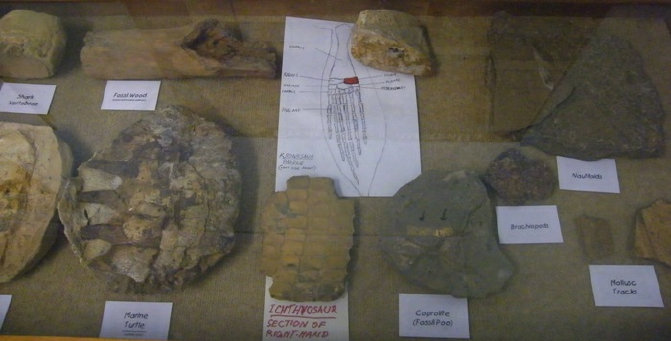
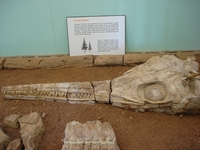
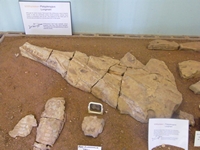
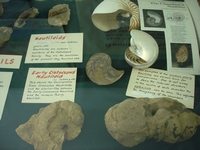
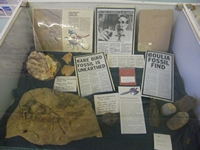
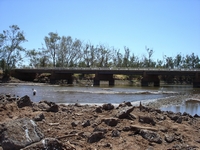
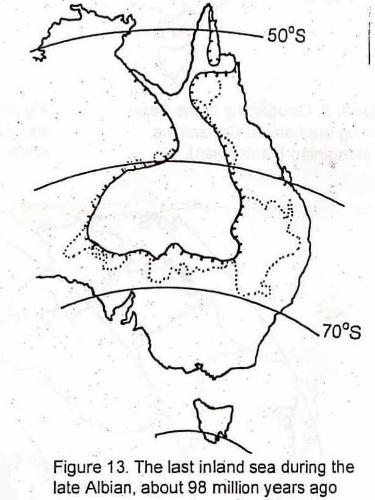
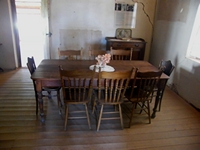
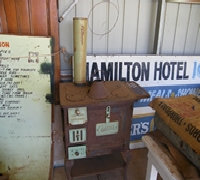
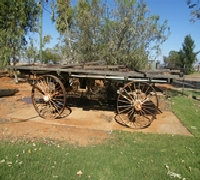
Boulia – The heart of the outback, a centre for marine fossils and home to the mysterious Min Min Lights.
Follow our further travels through this fascinating land of the